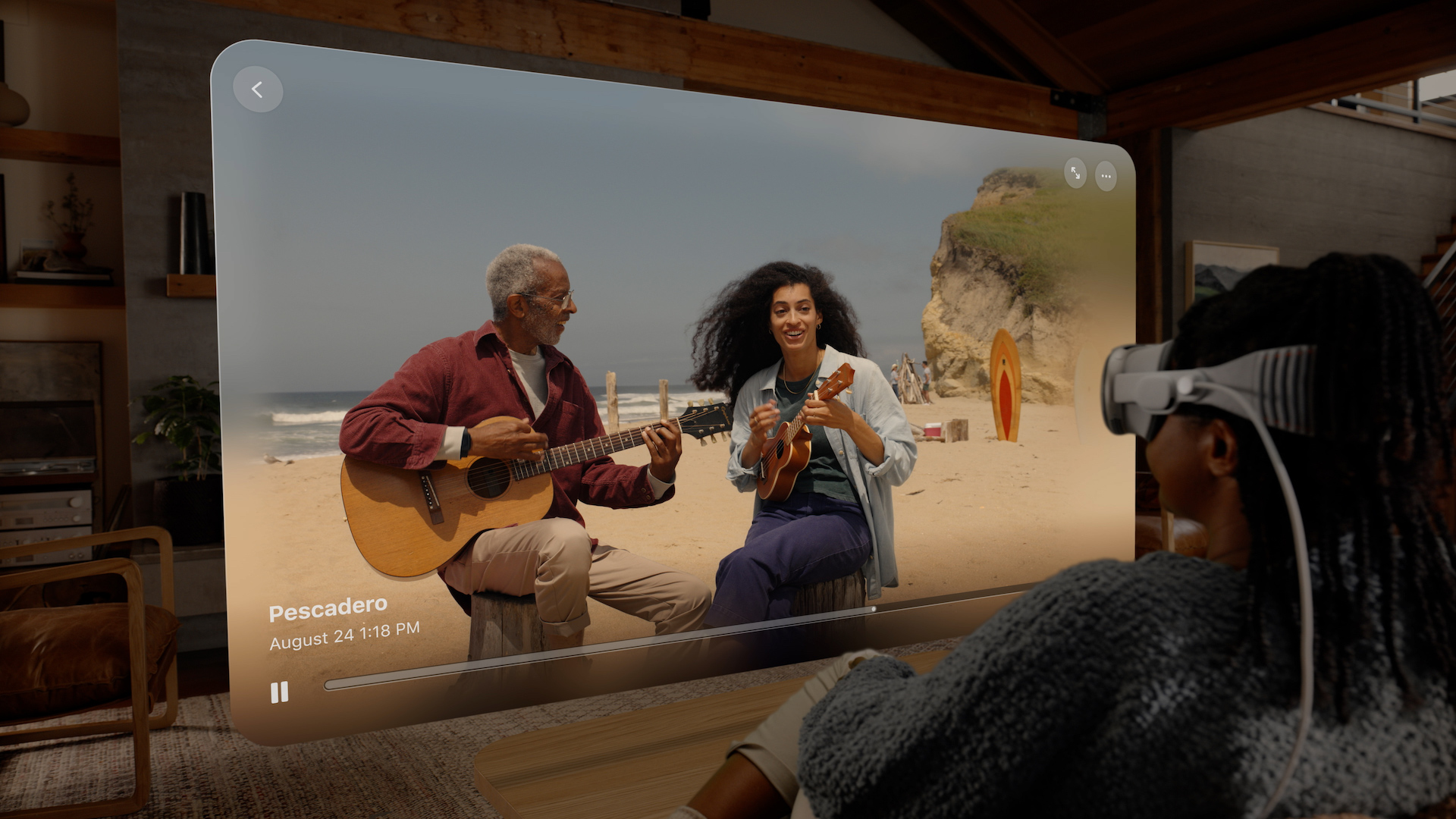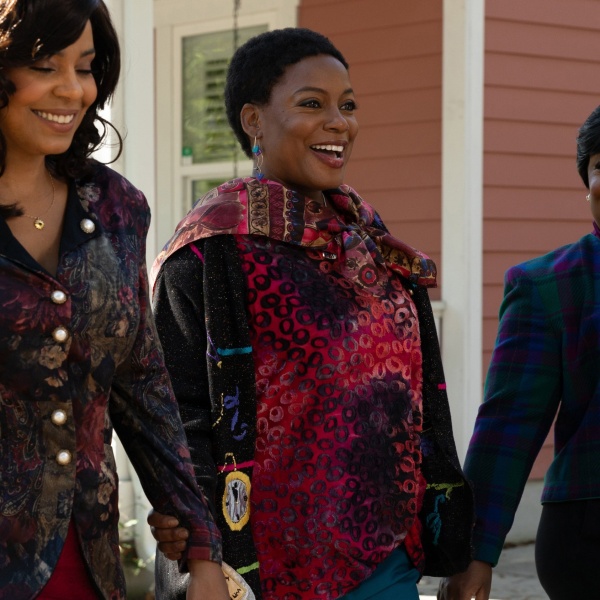Inches before my face are two young rhinos, some of the last of their kind, close enough for me pet them as they eat from the hands of an animal trainer. But what I’m actually seeing is the footage from what looks like an IMAX screen, shrunk to the size of a 23 million-pixel postage stamp.
The Vision Pro is Apple’s month-old “spatial computing” device, a $3,500 VR headset that lets you whip around windows and apps like you’re Tom Cruise in “Minority Report.” As VR headsets go, it’s the most impressive one we’ve tried.
Still: It’s $3,500, and tech responses are mixed. It could replace your iPhone, but no one seems inspired to do so. However, most reviews agree that Vision Pro excels when it comes to moving images. Now, Apple seems to be trying a different tactic: Can it appeal to cinema buffs?
Last week, Apple invited IndieWire to watch movies on the Vision Pro at its Culver City offices. It was the first time Apple’s slate of what it calls Immersive Video — 180-degree wraparound short films — received a full demo for entertainment press.
These included clips of an Alicia Keys studio performance; a documentary short about rhinos; another about a tightrope walker in the fjords; a VR version of Jon Favreau’s dinosaur series “Prehistoric Planet”; and a preview of a documentary about the MLS Cup playoff final that feels like you’re watching from the sidelines. All except the MLS doc are now available for streaming on a Vision Pro.

It was easy to leave feeling wowed. VR and 180 or 360 videos are nothing new, and I’ve done my fair share of demos, but the Vision Pro picture quality is next level. It can supposedly support a 16K resolution and I believe it. As I looked around or turned my head, the image didn’t warp or distort. Filmmakers positioned the camera to fill the frame, whether I was inside Alicia Keys’ recording studio or floating thousands of feet in the air off a Norwegian cliffside. I’d be amazed to see what a true auteur could do with the technology.
But as my eyesight adjusted, I had to ask: Is anyone going to spend $3,500 to watch a 7-minute film about rhinos? Would I be comfortable watching any movie longer than a half hour? (I never spent more than 20 continuous minutes in the headset.) And when would there be enough immersive content that I’d still care about it a month from now?
An Apple rep said it is developing a slate of Immersive Videos, but offered no details around what’s in the works. The “Rhinos,” “Highlining,” and “Prehistoric Planet” shorts are the first episodes in series intended for the Vision Pro, and more music docs like the Alicia Keys video seem like a given.
Of course, the Vision Pro also supports all the movies or shows available on Apple TV+ and the Apple store as well as major streamers like Disney+, Max, Paramount+, and Amazon Prime Video. Netflix isn’t available and no word if that’s coming, but a rep says more apps are coming soon. However, you could watch “Taylor Swift: The Eras Tour” on Vision Pro now — only without immersification.
It’s certainly an improvement from watching on your phone or tablet. A clip from “Avatar: The Way of Water” looked great, 3D and all (the Vision Pro supports 150 3D movies at launch all available for download). While the image isn’t stretched to surround you, it feels like watching something projected on a big screen. It also darkens your peripheral vision to give the illusion of being in a theater. It’s a big win if you prefer watching your movies distraction-free; less so, if you’re a New York Times reporter trying to watch “The Holdovers” while eating steak.

Other practical benefits make it a better and more comfortable viewing experience than other VR headsets. The Vision Pro has no controllers; it’s operated by glancing and tapping together your thumb and index finger, and I found pausing a movie or switching between titles simple and intuitive. You can also lie down and the picture will move with you. Apple offers two styles of headbands, one of which caused pressure on my temples and the other I barely noticed.
Still: Watching a movie through the headset is different than watching a short. The four Immersive Video originals now available range between 4 minutes and 20 minutes. I’m hard pressed to say that I’d prefer to watch Apple’s own 206-minute “Killers of the Flower Moon” on a Vision Pro — especially since the headset has a 2.5 hour battery life — but if Apple could convince Martin Scorsese to make full use of the immersive capabilities, I’d try it.
But how serious is Apple about developing more immersive content — and how many filmmakers want to work in this medium? Like 3D, the techniques that take full advantage of immersive video may not be the same ones that filmmakers want to use for their storytelling. Apple also declined to comment on any budget comparisons between immersive filmmaking and more established processes.
As the MLS doc clip suggested, it’s easy to imagine sports content becoming a big driver for Vision Pro. With Apple investing heavily in sports, it’s why I might choose to buy a Vision Pro over another VR headset if I’m a sports fan or already a subscriber to MLS Season Pass.
But for the movies? Not today. We’ve heard for a long time that every new tech innovation is going to disrupt filmmaking, and (some) people still go to the movies, so I can hear that for a while longer. But if anyone is going to get VR right, our money is on Apple.







